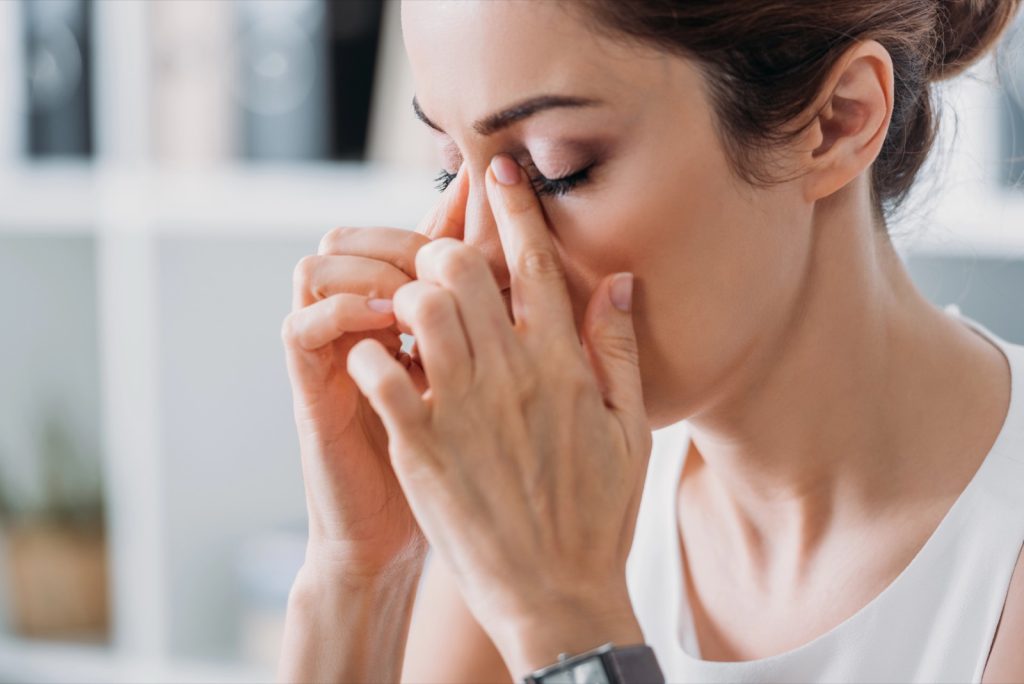Sinus and Nasal Issues
One of the most common ENT problems linked to mold exposure is chronic sinusitis, which is long-term inflammation of the sinuses. While most cases of sinusitis are bacterial or viral, mold can cause a condition called allergic fungal sinusitis (AFS). In AFS, the body’s immune system overreacts to mold spores, leading to thick, allergic mucus and nasal polyps that block the nasal passages and sinuses.
Other nasal symptoms include a runny or stuffy nose, sneezing, and postnasal drip, all of which are hallmarks of allergic rhinitis, or “hay fever.” These symptoms occur when the immune system mistakenly identifies mold spores as a threat and releases histamines, causing inflammation.
Ear Problems
Mold can also affect the ears, primarily by causing ear infections and earaches. When the nasal passages and throat are inflamed due to an allergic reaction, the Eustachian tubes—which connect the middle ear to the back of the throat—can become swollen and blocked. This blockage prevents proper drainage and pressure equalization, leading to a buildup of fluid in the middle ear, creating a perfect environment for bacterial growth and infection. In some cases, mold can even grow directly in the ear canal, causing a fungal ear infection known as otitis externa or “swimmer’s ear.”
Throat and Voice Issues
An irritated throat is another frequent complaint. Mold exposure can lead to a sore throat, hoarseness, and a constant need to clear the throat. This is often a result of postnasal drip, where excess mucus trickles down the back of the throat, causing irritation and inflammation.
Tips for a Mold-Free Home
Preventing mold growth is key to protecting your ENT health. Mold needs moisture and a food source (like wood, drywall, or fabric) to thrive. By controlling moisture, you can effectively prevent mold.
- Control Humidity: Keep indoor humidity levels between 30% and 50%. A hygrometer can help you monitor this. Use a dehumidifier in basements or other damp areas and an air conditioner in the summer to reduce humidity.
- Ensure Proper Ventilation: Make sure bathrooms, kitchens, and laundry rooms are well-ventilated. Use exhaust fans during and after showers, while cooking, and when doing laundry. Open windows to air out rooms when weather permits.
- Fix Leaks Immediately: Water leaks from roofs, pipes, or windows are a primary cause of mold. Address any leaks as soon as you find them to prevent water from soaking into materials.
- Clean and Dry: If you have a spill or a flood, dry the affected areas completely within 24 to 48 hours. This is a critical window for preventing mold growth.
- Clean Up Visible Mold: If you find a small area of mold (less than 10 square feet), you can clean it yourself with a mixture of water and a non-ammonia soap or detergent. For larger infestations, it’s best to call a professional mold remediation service.
- Use Mold-Resistant Products: When building or renovating, consider using mold-resistant drywall or paints, especially in high-moisture areas.
By being proactive about moisture control and maintaining a clean, dry home, you can significantly reduce your risk of mold-related ENT issues and breathe easier.



